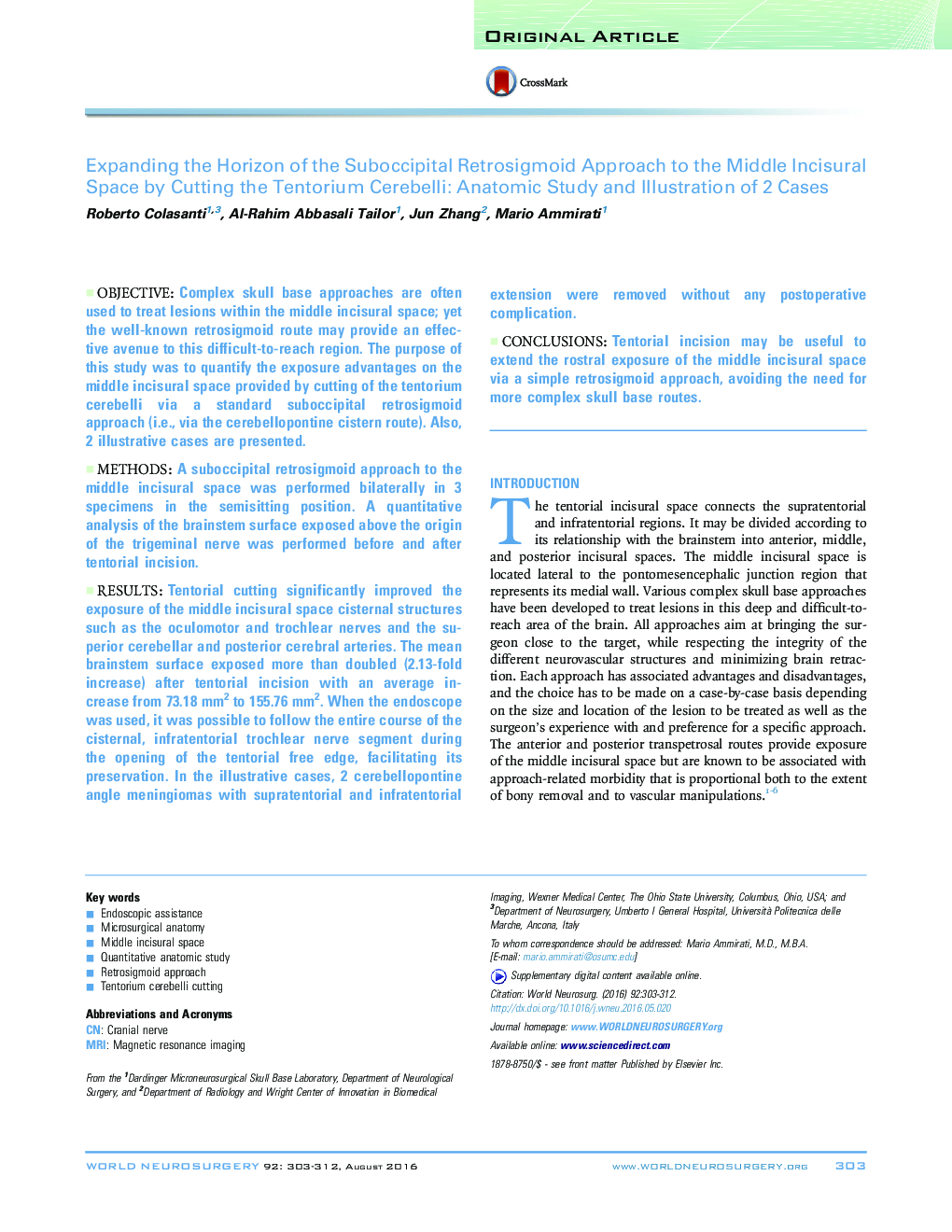| Article ID | Journal | Published Year | Pages | File Type |
|---|---|---|---|---|
| 3094716 | World Neurosurgery | 2016 | 10 Pages |
ObjectiveComplex skull base approaches are often used to treat lesions within the middle incisural space; yet the well-known retrosigmoid route may provide an effective avenue to this difficult-to-reach region. The purpose of this study was to quantify the exposure advantages on the middle incisural space provided by cutting of the tentorium cerebelli via a standard suboccipital retrosigmoid approach (i.e., via the cerebellopontine cistern route). Also, 2 illustrative cases are presented.MethodsA suboccipital retrosigmoid approach to the middle incisural space was performed bilaterally in 3 specimens in the semisitting position. A quantitative analysis of the brainstem surface exposed above the origin of the trigeminal nerve was performed before and after tentorial incision.ResultsTentorial cutting significantly improved the exposure of the middle incisural space cisternal structures such as the oculomotor and trochlear nerves and the superior cerebellar and posterior cerebral arteries. The mean brainstem surface exposed more than doubled (2.13-fold increase) after tentorial incision with an average increase from 73.18 mm2 to 155.76 mm2. When the endoscope was used, it was possible to follow the entire course of the cisternal, infratentorial trochlear nerve segment during the opening of the tentorial free edge, facilitating its preservation. In the illustrative cases, 2 cerebellopontine angle meningiomas with supratentorial and infratentorial extension were removed without any postoperative complication.ConclusionsTentorial incision may be useful to extend the rostral exposure of the middle incisural space via a simple retrosigmoid approach, avoiding the need for more complex skull base routes.
